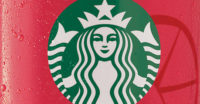Thirsty for Knowledge












But beyond a simplified, clean layout of information, design firms also are seeing an opportunity for package design to expand beyond the label through augmented reality or quick-response (QR) codes.
“The thing that’s really interesting is integrating these codes and symbols, which are not difficult to print, into beverage pack labels so we can have a very direct link between the pack design and what’s happening in the rest of media — the digital world that brands are creating for their consumers,” PI Global’s Kelsey says. “… It gives us the opportunity to do interesting things with games, promotions [and] all sorts of brand extensions.”
The increased extension of brands through packaging is a trend that market analysts see expanding in the future. Karine Dussimon, senior packaging analyst with Euromonitor International, foresees the use of packaging as an initial platform that takes consumers to an online marketing campaign, a social network page or the brand owner’s website by using QR codes to better reach consumers who are increasingly connected.
Environmental impact
Beyond communicating a brand message to consumers, package design also has a higher calling to deliver on environmentally friendly designs.
“Continued and increasing concern over packaging’s impact on the environment has encouraged a number of [fast-moving consumer goods] multinationals to further their development of more sustainable packaging solutions, such as lighter or even plant-based bottles,” Euromonitor’s Dussimon says. “In the case of lighter bottles — be it plastic or glass — it is often an investment in terms of research and development to solve the technical challenge that it represents, but it also often turns into a gain for all parties.”
The incidence of environmental concerns varies by region, she says. For instance, North America and western Europe are the most prominent, but in developing areas such as China, it is becoming more important.
Size selections
To reach a variety of households and consumers, manufacturers design multiple package size formats. In its “Beverage Packaging Trends” report, Mintel identified that multi-serving packages for beverages are the most popular at 94 percent purchase incidence with single-serving and multi-pack beverages recording 89 and 88 percent purchase incidence, respectively.
Touting the least expensive cost for each serving, multi-serve containers accommodate the need for large quantities of the household’s most consumed beverages, such as milk, juice, juice drinks and carbonated soft drinks, according to Mintel. However, the market research firm found that multi-serving and single-serving containers are purchased somewhat less frequently by consumers who are younger than 65 than by younger demographics. The multi-serve packaging format, however, showed strong appeal to older consumers, likely because of its ability to accommodate smaller households, and because older consumers tend to be highly price-sensitive and prefer cost efficiency.
For multi-packs, aluminum cans are the most frequently purchased container, according to Mintel. Multi-packs also address the need for large quantities. For example, many juice product multi-packs contain 10 to 12 single-serve juices.
It’s a long way down the beverage “runway,” but package design can help put some spring in a product’s step to help it stand out from the rest.
Looking for a reprint of this article?
From high-res PDFs to custom plaques, order your copy today!











